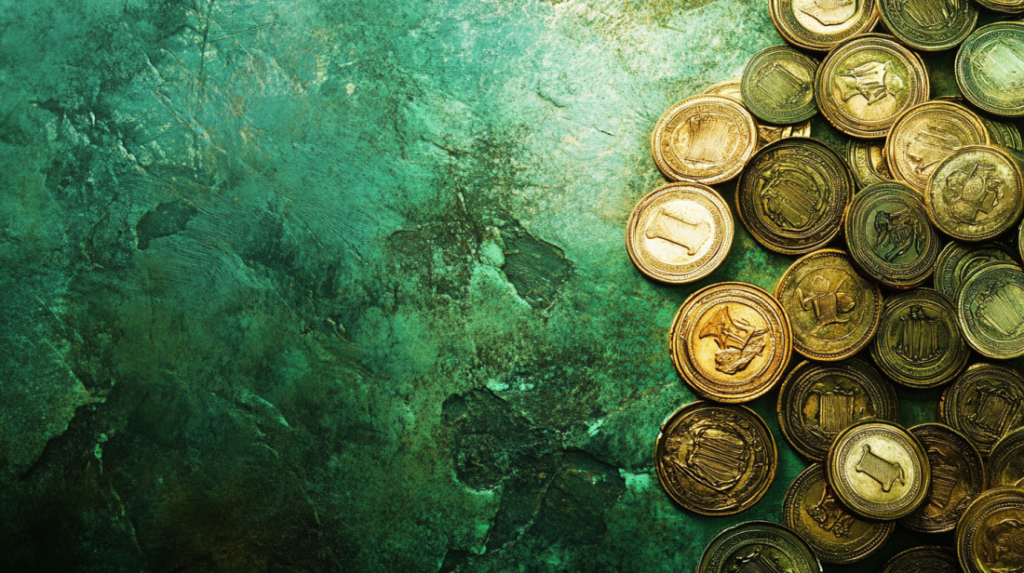The Legacy of Roman Coins: A Journey Through History and Art
From the beginning of the Roman Republic to the end of the Western Roman Empire, Roman coins tell tales of emperors, gods, conquests, and social ideals. They are more than just money; they are historical artifacts that provide insight into the rich and intricate fabric of ancient Rome.
In this blog, we delve into the fascinating world of Roman coinage, exploring its history, artistry, and enduring legacy.

The Origins of Roman Coinage
Roman coins first appeared around 300 BCE, during the Roman Republic. Early Roman coinage included bronze coins called aes graves, which were heavy and often cast rather than struck. Over time, the Romans adopted the use of silver and gold, inspired by the sophisticated monetary systems of neighboring civilizations like the Greeks.
By the 3rd century BCE, the denarius emerged as the backbone of Roman currency. Made of silver, it became widely recognized and remained in use for over four centuries.
Designs and Symbolism
The designs on Roman coins were more than decorative—they were tools of propaganda, education, and communication. Each coin was a canvas that conveyed messages about Roman ideals, leadership, and achievements.
Portraits of Emperors: Coins often featured the busts of emperors, showcasing their power and divine status. Augustus, the first Roman emperor, set the precedent for using coins to solidify his image as a ruler chosen by the gods.
Mythological and Religious Imagery: Gods and goddesses, such as Jupiter, Mars, and Minerva, frequently adorned coins, emphasizing the divine favor bestowed upon Rome.
Commemorative Themes: Coins celebrated military victories, public works, and significant events. For example, coins struck under Emperor Trajan depicted his triumphs in the Dacian Wars, while others celebrated the construction of the Colosseum.
The Role of Roman Coins
Roman coins played a pivotal role in the empire, serving purposes far beyond commerce:
Economic Stability: Coins facilitated trade and taxation, binding the vast empire’s economy together.
Propaganda: Coins effectively disseminated the emperor’s image and achievements across the empire, reaching even the most remote provinces.
Historical Records: Many events, from military campaigns to transitions of power, are documented through the imagery and inscriptions on Roman coins.
Artistry and Innovation
Roman coinage demonstrated exceptional craftsmanship and innovation. The intricate details of their designs were achieved using dies engraved by skilled artisans. Gold coins, such as the aureus, and silver coins, like the denarius, highlighted Rome’s wealth and technical prowess.
One fascinating aspect of Roman coins is the gradual debasement of their precious metal content. Over time, economic pressures reduced the amount of silver and gold in coins, which is a key indicator for historians studying the empire’s economic health.
Famous Roman Coins
Some Roman coins are particularly noteworthy for their historical and artistic significance:
The Julius Caesar Denarius: Featuring the first portrait of a living Roman, this coin marked a turning point in Roman history and was seen as a bold declaration of Caesar’s authority.
The Sestertius of Nero: Celebrated for its detailed depiction of the Colosseum, this coin exemplifies the emperor’s use of coinage to promote his architectural achievements.
The Solidus of Constantine the Great: This gold coin symbolized Constantine’s reign and his endorsement of Christianity as a unifying force in the empire.
Collecting Roman Coins Today
Roman coins are highly sought after by collectors and historians alike. Each coin holds unique insights into ancient Rome’s life and times. Collectors value coins not only for their beauty but also for their historical significance.
Some factors influencing the value of Roman coins include:
Condition: Well-preserved coins fetch higher prices.
Rarity: Coins from lesser-known emperors or specific historical periods are highly prized.
Historical Context: Coins tied to significant events or figures, such as Julius Caesar or the fall of Rome, are especially valuable.
The Enduring Appeal of Roman Coins
Roman coins continue to captivate the imagination, offering a tangible connection to a civilization that shaped the world. Whether studied as historical documents, appreciated as works of art, or treasured as collectibles, these coins are timeless reminders of Rome’s grandeur and legacy.
As one philosopher aptly noted:
“Money, in its essence, is history cast in metal, telling tales of power, piety, and ambition.”
Roman coins are more than relics; they are storytellers, narrating the rise and fall of an empire that continues to inspire and intrigue the modern world. Whether you’re a history enthusiast, a numismatist, or simply curious about the past, Roman coins offer a journey into the heart of one of history’s greatest civilizations.



